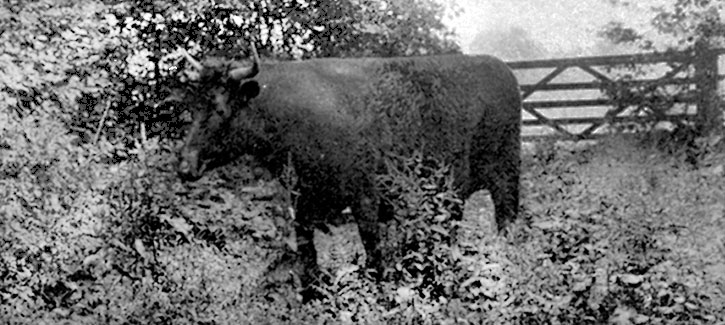
Close-up of an image of a dummy ox from A Naturalist’s Pilgrimage (Houghton, 1926) by Richard Kearton. (Courtesy University of Chicago Library)
On first glance, you might be fooled by this 1898 picture of a fake ox. Wild animals might too. In fact that’s what brothers Richard and Cherry Kearton, the ornithologist and photographer who made it, were hoping for. In the early days of wildlife photography, says art history PhD student Carl Fuldner, people used bizarre techniques to try to capture “authentic” nature photos. Dummy animals were one method that’s still used. Photographers placed them near a nesting site and then climbed inside and waited. Another common method, stalking, “is just what it sounds like,” says Fuldner. Later, photographers developed ways to remain undetected by remotely triggering their cameras.
Fuldner curated The Studio in the Field: Techniques of Early Wildlife Photography, running through September 15 at the John Crerar Library. Gathering books, photographs, cameras, and other artifacts, the exhibit moves from the 1890s, when photographers first ventured out with cameras that could capture still photos of moving animals, through part of the 20th century. The images below, from Richard Kearton’s 1926 A Naturalist’s Pilgrimage, are among the items on display. Offering early photos of birds, snakes, deer, worms, and other fauna, the exhibit examines how we perceive photographs and challenges the idea—always implied in wildlife photography—that the animals are unaffected by the humans behind the camera.
Photography is a bit like the Heisenberg uncertainty principle: the presence of the photographer and the act of taking the picture might change an animal’s behavior. “Wildlife photography is one of the places where we get our perception of untouched nature, a nature unsullied by human intervention,” Fuldner says. Yet techniques like dummy animals, netting to keep birds from flying away, and artificial tree trunks tell a different story.
[[{"type":"media","view_mode":"media_original","fid":"2786","attributes":{"alt":"","class":"media-image","height":"388","typeof":"foaf:Image","width":"500"}}]]
